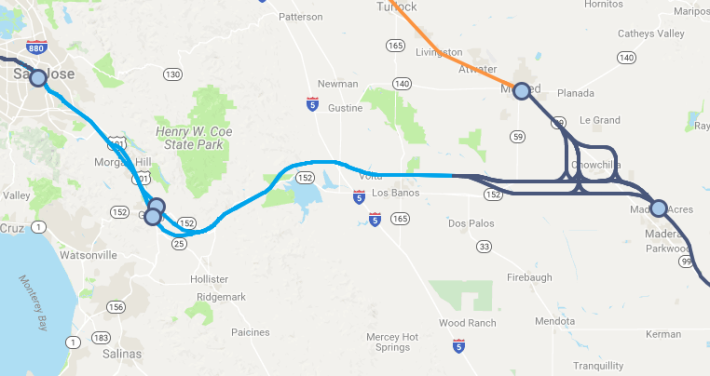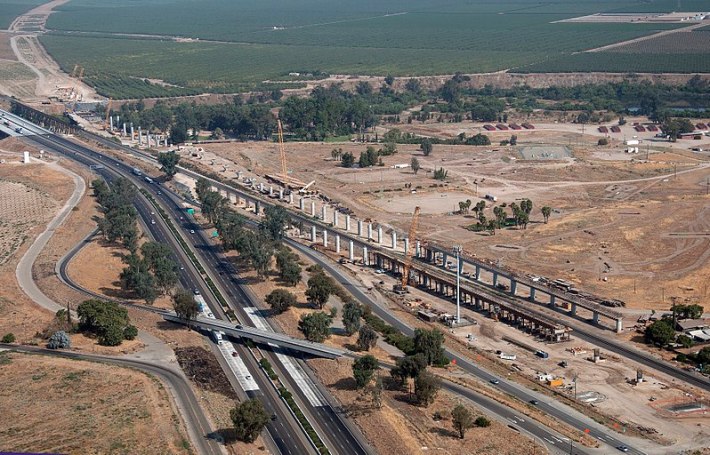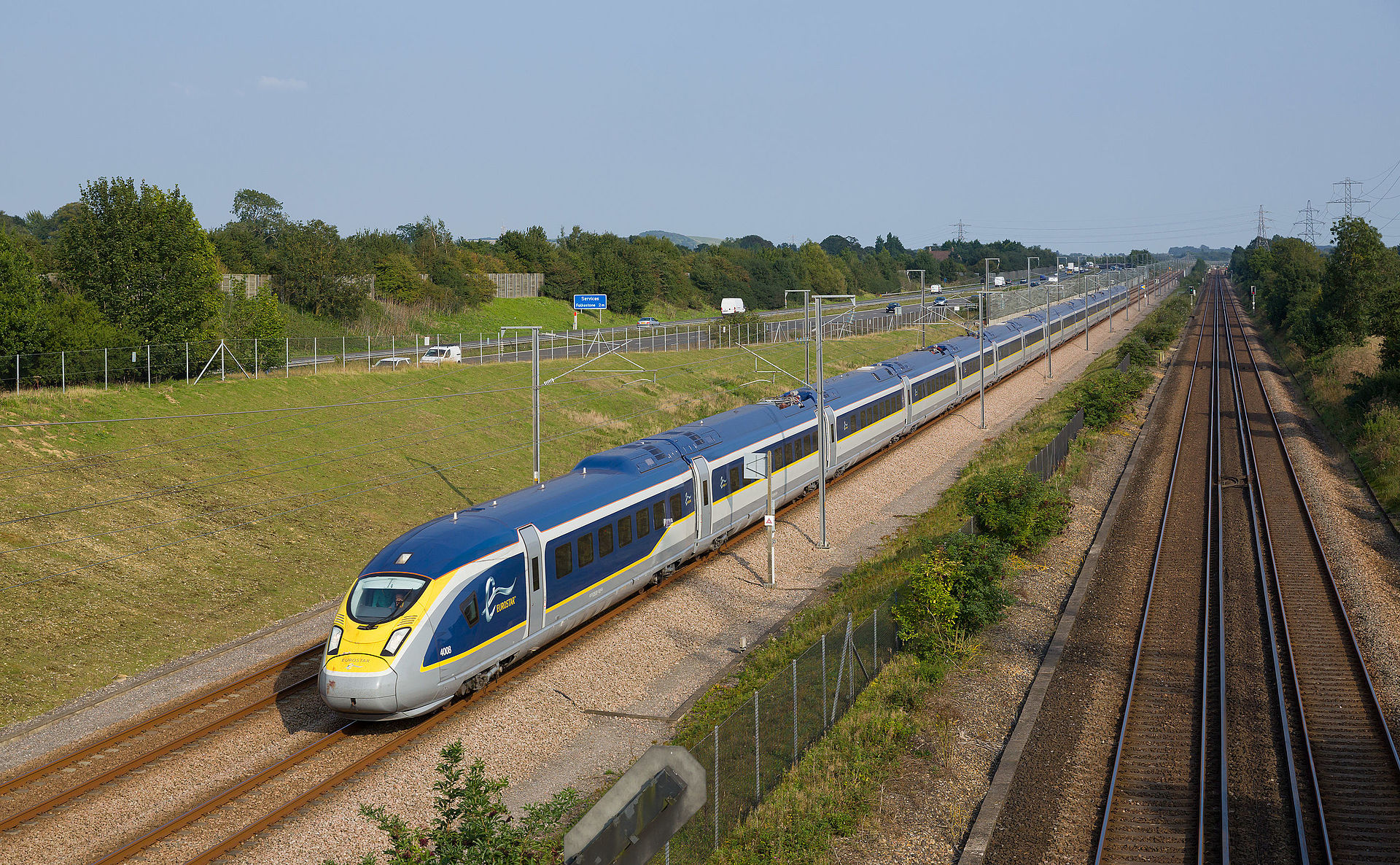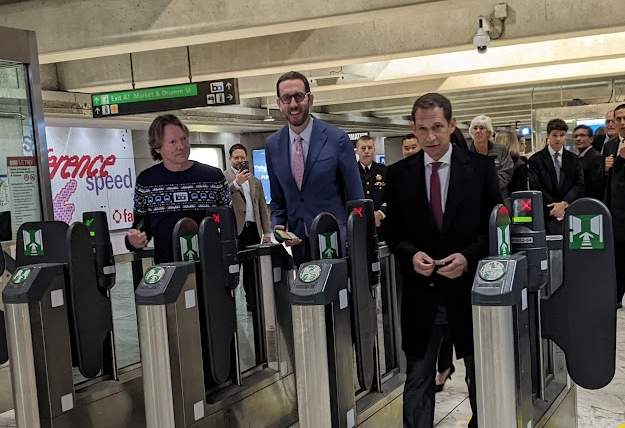Note: GJEL Accident Attorneys regularly sponsors coverage on Streetsblog San Francisco and Streetsblog California. Unless noted in the story, GJEL Accident Attorneys is not consulted for the content or editorial direction of the sponsored content.
The state's rail modernization project, also known as California High-Speed Rail, is now anticipating spending an additional $2.8 billion to complete the 119-mile Central Valley segment from Bakersfield to Madera. "63 percent of which is due to risk factors identified and reported in the 2016 Business Plan, the March 2017 Project Update Report and discussed publicly at the Authority’s prior Finance and Audit Committee," wrote the authority in a release.
As a result, politicians and state regulators are asking for an external audit, which the authority has welcomed. “Over the years, the High-Speed Rail program has been audited at the federal and state level, in addition to our extensive internal audits," wrote California High-Speed Rail Authority (CaHSRA) Chairman Dan Richard. "This type of oversight is critical to public confidence in the program and we’ll work cooperatively with the committee to fully address the issues that are raised.”
The authority is saying that the increase doesn't endanger its federal grants and it will still be able to complete the Central Valley spine, where trains will eventually travel at over 220 mph. However, it does call into question whether the Authority will have enough funds to complete the project's "initial operating segment" by 2025, which would provide service between San Francisco, San Jose and the Central Valley.

"Most major infrastructure projects have cost overruns. It kind of goes with the nature of doing big messy civil construction," wrote Andy Kunz, President & CEO of the US High-Speed Rail Association. "The more the project gets dragged out, the more expensive it is to build."
Kunz also blamed lawsuits for the cost increases. "These can never be fully known in advance going into any type of major project like this that crosses hundreds of miles of properties."
He added that California should use more pre-fab structures and giant cranes to move them into place more quickly, which also helps keep costs down and construction timelines speedier in China. China has smashed all records for construction, building or upgrading over 12,000 miles of track in just the past decade. Kunz said that China builds HSR faster and more cheaply in part because projects are fully funded from the start, rather than depending on revenue streams that come and go with political shifts.
In the meantime, if the connection between the Central Valley and San Jose (shown in light blue in the above map) is significantly delayed, it will be possible for Amtrak to use the Central Valley spine for its San Joaquin trains, which could travel much faster on the HSR tracks. The San Joaquin trains currently run at a top speed of about 80 mph from Oakland and Sacramento to Bakersfield, but the locomotives are capable of 125 mph. Amtrak's trains are currently limited by regulations, sharp curves, and slow freight trains that share the tracks.

Either way, it's incredibly frustrating that mega projects in California--and throughout the U.S.--seem to almost inevitably run into big delays and cost overruns. This includes highways, airports, transit projects and, of course, bridges and tunnels.
The New York Times recently did a long feature about transit construction overruns in New York, pointing out that the Second Avenue Subway cost $2.5 billion a mile while the comparable Line 14 extension in Paris is "on track to cost $450 million a mile." It's a great, well-researched and comprehensive feature. It's just a shame that when highways have cost overruns, as Streetsblog USA pointed out, the press seems to all but ignore it. They do happen, sometimes to the extreme; there isn't a petroleum-backed industry cadre of "think tanks" endlessly highlighting it the way they do for transit and intercity rail. For more on media bias with transportation projects, check out Streetsblog California.
Either way, let's hope as part of the audit, California will take a hard look at the HSR project's finances and will determine what can be learned from China, France and other countries about building major projects more efficiently.
The CaHSRA, meanwhile, has selected a new Chief Executive Officer, Brian P. Kelly, to lead the organization. He's starting on February 1. Previously, Kelly served as Secretary of the California State Transportation Agency, which has an $18 billion budget. In an interview in The New York Times, Kelly said that in "...23 years of doing transportation policy in California I have never seen a single project that would have such a transformative impact as this one." In that interview, he also declined to commit to the previous timeline for opening service to the Bay Area.
The authority also announced that it has signed a contract with DB Engineering & Consulting USA, a subsidiary of Deutsche Bahn, Germany's rail operator. The idea is to start planning for train operations as the project continues construction. "This firm will assist the high-speed rail program in designing, developing and procuring the commercial aspects of the high-speed rail passenger train operations," writes the CaHSRA about the deal. Deutsche Bahn runs a massive network of high-speed trains profitably in Germany and has helped other nations around the world to design and operate fast rail systems, many of which are obliterating short-haul airline routes between major cities.





